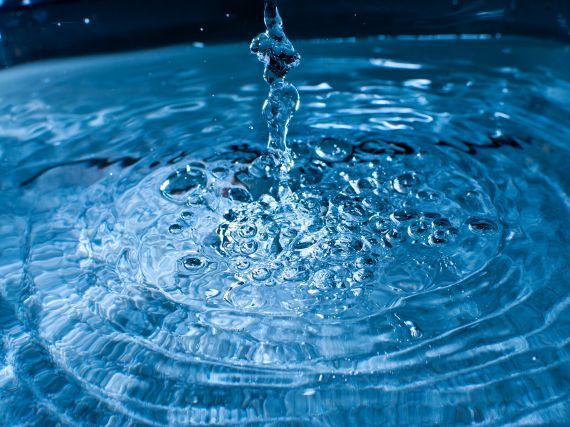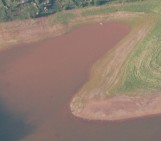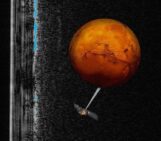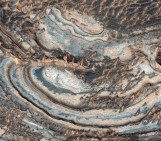The O in H2O attracts electrons towards it, a property known as electronegativity. And because oxygen attracts electrons towards it, it is ever so slightly positive. Likewise, the hydrogen atoms in a water molecule are ever so slightly negative. The difference in charge across a water molecule is what holds water together as the slightly positive hydrogen atoms are attracted towards the slightly negative oxygen atoms – a phenomenon known as hydrogen bonding.

Water molecules are drawn together by hydrogen bonding – attraction between negative hydrogen atoms and positive oxygen atoms. (Credit: Wikimedia Commons user Qwerter)
Hydrogen bonding is what gives water its adhesive and cohesive properties, allowing water to form thin films as it spreads of smooth surfaces (adhesion), and stick together (cohesion) as droplets, that can fall as rain, collect on the surface of a leaf, or obscure your hand lens as you try your best to do fieldwork in bad weather.

“Water drops” by Jacqueline Isabella Gisen, distributed by the EGU under a Creative Commons licence.
This photo by Jacqueline Gisen captures the cohesive nature of water. She explains that “cohesive forces make water molecules to attracted to each other from every direction,” but because the water’s surface is exposed to the atmosphere (where there is relatively few water molecules) it can only be pulled down towards the rest of the fluid. This creates surface tension, responsible for the bouncing droplets you see when one source of water pours into another.
Imaggeo is the EGU’s open access geosciences image repository. A new and improved Imaggeo site will be launching soon, so you will be able to peruse an even better database of visually stunning geoscience images. Photos uploaded to Imaggeo can be used by scientists, the press and the public provided the original author is credited. Photographers also retain full rights of use, as Imaggeo images are licensed and distributed by the EGU under a Creative Commons licence. You can submit your photos here.



